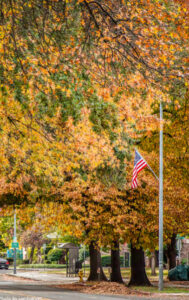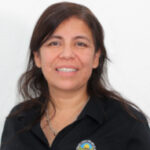Cities like Chico are under growing pressure to protect people from harm and death as waves of extreme heat become more commonplace — and after California faced its hottest month on record.

The state, meanwhile, says it is launching a new program to help vulnerable communities — particularly the unhoused and aging populations — face increasingly hot seasons. Several experts on a recent Ethnic Media Services panel said cities must look for ways to manage extreme heat waves that will last longer and pose more risk than ever before.
In Gov. Gavin Newsom’s office, the state is launching a grant-based community resilience program to help counties and nonprofits across the state face this new reality, said program manager Braden Kay.

Kay said that cities in other states, like Arizona, already reflect a future that many California cities will soon face. Heat-caused deaths can take place anywhere where temperatures exceed 90 degrees Fahrenheit, particularly in areas where nighttime temperatures consistently stay above 80 degrees. More than half of all heat-related deaths take place indoors, and isolated seniors are the most at risk.
“These are not your grandmother’s heat waves,” Kay said.
He said climate change has made even the hottest places hotter, and city planning in general has not prepared infrastructure to help people’s bodies handle the heat.
“We see public health impacts throughout the season,” Kay said. “People are not able to do activities that they were used to doing at the normal times of day.”
Cities, he said, need to consider adding more shade infrastructure and other cooling methods around the community to aid in people safely moving around during extreme heat events. Energy infrastructure must change along with social infrastructure; community organizations can advocate for improved cooling centers, for example.
“There is an important opportunity to use cool roofs and cool pavements in public spaces and schools,” he said. “Our grant program will be able to find pilot projects to test cool roofs and cool pavements across California.”
Cities can also invest in programs to increase the number of trees in urban areas, called the “tree canopy,” for natural cooling.

Jonathan Pilch, executive director at Watsonville Wetlands Watch, said that a healthy tree canopy should be the priority for all cities that face extreme heat. That takes strategic and focused tree planting, he said, since it can take five to eight years from planting for a tree to mature.
That’s one goal Chico has set its sights upon. Urban Forest Manager Richie Bamlet said the City recently finished an Urban Forest Master Plan with the goal to plant 500 trees per year for the next 40 years to achieve a 40% tree canopy.

With the help of two Cal Fire grants, the City has begun planting about 1,700 trees around Chico, working with the non-profit Butte Environmental Council to provide free trees to residents who apply, Bamlet added. The plan proposes many more goals the City can pursue, including development of an urban forest advisory committee to gather input about urban forest practices and an incentive program to offset the cost to water a newly planted tree over three years using grant funding.
Cities may also wish to improve access to cooling centers, experts point out. Hubs at public buildings, like libraries, often close before nightfall, leaving people more vulnerable to heat illness and death. Dr. Sharon Okonkwo-Holmes, a family physician at Kaiser Permanente Southern California, said that many of her older patients do not have working air conditioning and may not have a way to easily find and stay in cooling centers.
Esther Bejarano, programs manager for Comite Civico del Valle, Inc., leads community health programs in the state’s hottest county, Imperial. She said her organization sees firsthand how people of color in communities with few resources for cooling are increasingly impacted during hot seasons.

“We are the trusted messengers, working to educate the community on heat illness, on extreme weather,” she said. “It’s getting hotter every summer. We don’t have hardly any trees, we don’t have any safe areas to park and reduce that harm in our community.”
Many of the state’s cities are facing public pushback over the growing number of unhoused people who are vulnerable to extreme heat within city limits, and the limited resources available to prevent exposure and deaths. In Chico, as criticism from the public increased, city officials said in July they would provide water bottles and improve cooling centers for more than 1,000 unhoused people.
Officials could not be reached for comment on whether water access at unhoused encampments has improved since earlier in the summer, when many residents asked the City to ensure that would happen.
Natalie Hanson is a contributing writer to ChicoSol.
